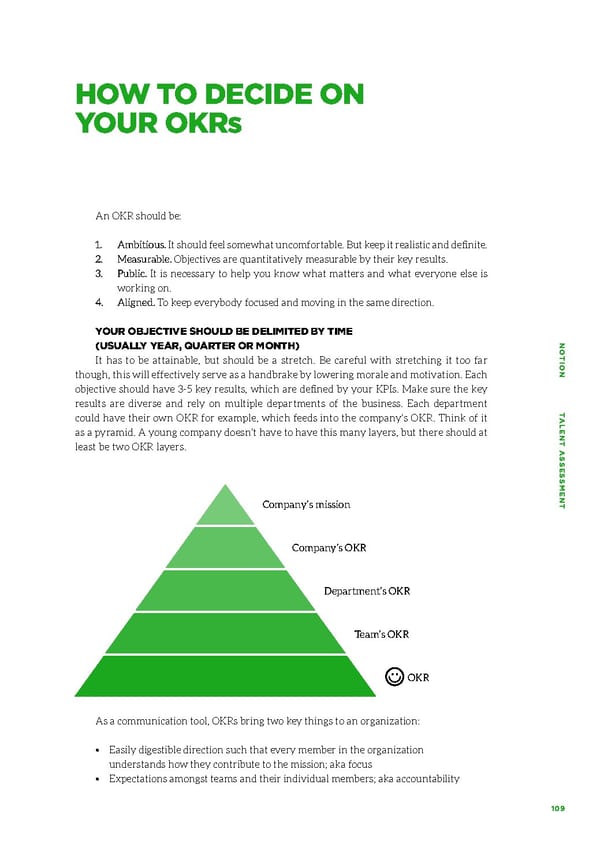HOW TO DECIDE ON YOUR OKRs An OKR should be: 1. Ambitious. It should feel somewhat uncomfortable. But keep it realistic and definite. 2. Measurable. Objectives are quantitatively measurable by their key results. 3. Public. It is necessary to help you know what matters and what everyone else is working on. 4. Aligned. To keep everybody focused and moving in the same direction. YOUR OBJECTIVE SHOULD BE DELIMITED BY TIME (USUALLY YEAR, QUARTER OR MONTH) NONO It has to be attainable, but should be a stretch. Be careful with stretching it too far TION TTION T though, this will effectively serve as a handbrake by lowering morale and motivation. Each objective should have 3-5 key results, which are defined by your KPIs. Make sure the key results are diverse and rely on multiple departments of the business. Each department could have their own OKR for example, which feeds into the company’s OKR. Think of it ALENT AALENT A as a pyramid. A young company doesn’t have to have this many layers, but there should at least be two OKR layers. SS SESSES SMENTSMENT Company’s mission Company’s OKR Department’s OKR Team’s OKR OKR As a communication tool, OKRs bring two key things to an organization: • Easily digestible direction such that every member in the organization understands how they contribute to the mission; aka focus • Expectations amongst teams and their individual members; aka accountability 109109
 Talent Assessment for Growth Startups Page 105 Page 107
Talent Assessment for Growth Startups Page 105 Page 107